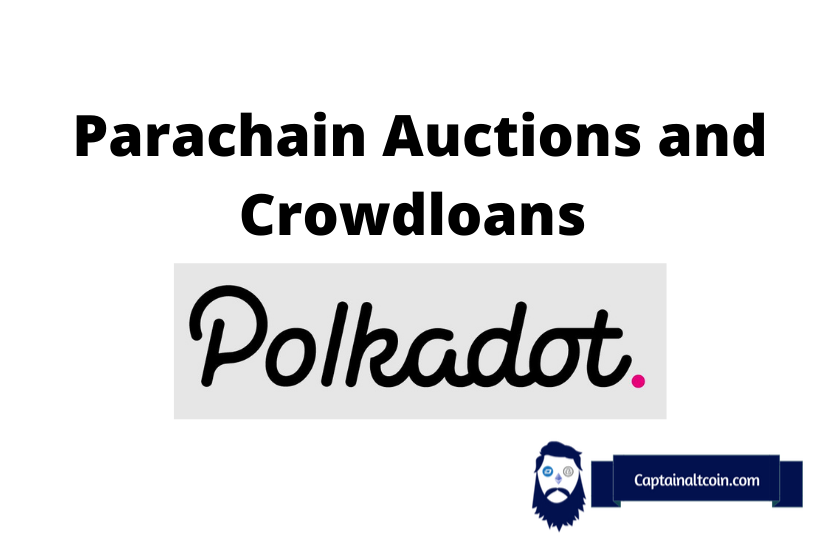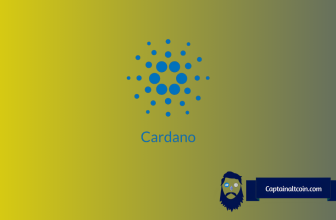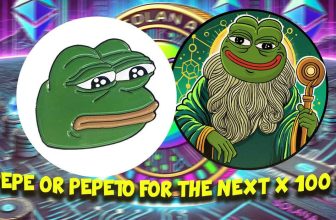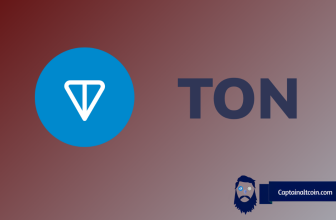
After Polkadot went up 20% in just one day, many crypto enthusiasts have started researching this new interesting project. Since it’s possible that Polkadot will keep on rising, it’s important to understand what Polkadot parachain auctions are and how you can participate in them using Crowdloans. If you are looking to invest in Polkadot, these are some basic things that you have to learn.
In this article, we are going to give you an in-depth explanation of how these things work and what innovations Polkadot has brought into the crypto world. Let’s check it out.
What you'll learn 👉
TL;DR
· Winning a parachain auction is necessary in order for projects to become parachain.
· All parachain auctions that can be found on Kusama and Polkadot are supported by Fearless Wallet.
· There is a limited leasing period. On Polkadot, it is 96 weeks maximum, while on Kusama, it is 48 weeks maximum.
What is a Crowdloan?
Crowdloan is one of the new features of Polkadot. With Crowdloan, users can contribute their DOT or KSM tokens to a project called “Crowdloan Campaign.” If you contribute tokens, you ensure your place in a parachain auction where you can win a parachain slot. You can contribute DOT and KSM tokens only until the lease period ends.
As a reward, contributors get this project’s native blockchain tokens. In short, token owners willingly lock up a certain amount of tokens for the duration of the lease. After the lease has expired, the project returns the full amount of contributed tokens to their rightful owners.
While “loan” is mentioned in this term, it is a bit deceptive. You aren’t really loaning any funds to the parachain. Instead, the contributions you provide are locked into sponsored accounts (Kusama or Polkadot) for a certain amount of time.
Crowdloans aren’t the only option of raising KSM or DOT tokens you can use to bid. Other options include ICOs, IDOs, private sales, public sales, and many more.
What’s more, if you do decide to use Crowdloan, you will still be able to place higher bids. Apart from contributing Crowdloan’s KSM and DOT tokens, a project can use its own tokens for bidding.
The Benefits of a Crowdloan
You might think, “This all sounds interesting, but what are the exact benefits of crowdloans?”
Well, there are actually a few interesting benefits from participating in this project. For starters, Crowdloan is a great way for users to contribute to a project they enjoy using, all while earning tokens in the meantime.
Crowdloans can vary in terms of rewards and conditions and not all parachain projects will conclude a crowdloan. However, with all the small differences aside, there are two things that crowdloans have to display: the duration of the campaign and the reward cap.
The teams that run crowdloans are the ones who should display this information. Newer projects see a great ally in Crowdloans since they can help them kick-start their network on Kusama and Polkadot. Some other benefits of using Crowdloans are:
· Your project can use Crowdloans to allocate tokens to supportive members of the project’s community.
· No wasting time on fundraising since you will be able to cover the cost of a parachain slot with very few resources.
· There is a direct link to support growth for future projects.
Crowdloans Are Used to Win a Parachain Auction

Overall, Crowdloans are a great way for community members to contribute to a project DOT/KSM tokens and get the chance to win parachain slots. Users are free to contribute and lock their own DOT/KSM tokens until the lease period has ended. As a result, the parachain auctions give out rewards to the contributors – native blockchain tokens.
The DOT and KSM tokens (depending on which auction the users participated in) that were contributed are returned to the users once the leasing period ends. In cases when projects don’t win anything at the parachain auction, the DOT/KSM tokens will still be returned, but not automatically, typically in a few days.
What is a Parachain Auction?
A “Parachain Auction” is the name for auctions hosted on Polkadot and Kusama networks. This is a nonpermissive way to decide what blockchain is going to be the next one featured on the parachain. At the moment when the auction starts, each project on the network is free to contribute a desired amount of tokens to the relay chain.
Parachain auctions work as “candle” auctions. A candle auction is a term that originated in the 16th century, it’s actually the method people used to auction ships back then. The winner of the ships would be the highest bidder, and the auction duration was determined by lighting a candle. When the flame went out, all bids were stopped. The process is pretty similar to Polkadot and Kusama auctions. The two key pieces of information they use include a set bid amount and the duration of the slot. Depending on which platform you plan to use, you need DOT or KSM tokens to bid.
Auction Mechanics
The parachain slot auctions are a modern-day version of candle auctions. In the previous subheading, we have explained what candle auctions are, but what was the general idea behind these auctions?
The idea was that none of the participants of candle auctions knew when exactly the candle would burn out. This means, the participants were more likely to place higher bids early in the auction, which would later lead to more precise price discovery. With blockchain technology, candle auctions have become a lot more effective.
Polkadot and Kusama determine a specific period for how much the auction will last, and during this time, users can bid and contribute tokens through Crowdloan. When this period is almost expired, the precise time the auction will end depends on a VRF (Verifiable Random Function).
When VRF declares the end of the auction, the highest bid will win. It is a fair, reliable, and accurate format, and it does a great job at removing auction sniping. Auction sniping is a method people use to win an auction by bidding for a lower price than what the item is actually worth, they do it by waiting until the last moment to place their bids.
Before users participate in the auction, they can choose how much they want their lease to last. For Kusama, the maximum is 48 weeks, while Polkadot has a maximum of 24 months. Depending on the users’ choice, the parachain will be connected to the network, and contributions will be locked up during this period. One parachain slot – One auction; and only one auction at a time is allowed.
Blockchains: Parachains and Relay Chains
Before we go into detail, here is some background on this topic. Both Polkadot and Kusama work as “Relay Chains.” They are created with the purpose of hosting blockchains that are called “Parachains.” A Relay chain is a primary chain; it’s where the different transactions are concluded. On the other hand, Parachains are the blockchains that are linked to the Relay chain.
Parachains typically work alongside the Polkadot/Kusama network. They can be modified to adapt to the specific design and specifications of the network. A popular example of this is DeFi, identity management, and gaming. Neither one of these blockchains has an advantage over the other.
The Relay chain of Kusama and Polkadot handles more than one hundred parachains. It’s the slot auction procedure that determines which parachain will ultimately be connected to the existing Relay chain.
How Do Polkadot Parachain Auctions Work?
To take advantage of the benefits the networks offer, parachains must first connect to the Relay chain. Naturally, there should exist a sort of criteria that determines which parachains are allowed to connect. This is why the parachain auctions are useful.
The auction is a great way for parachains to connect to the Polkadot/Kusama network through an open and nonpermissive auction. The general idea behind the auctions is to distribute parachain slots to those projects who want to conduct their operations on one of the networks. The current goal is to have one hundred parachains operating simultaneously.
The rarity of parachain slots is intentional. The goal is to encourage competition between blockchains and conduct the best distribution of Relay chain resources possible. Since there aren’t many slots open, the parachains are constantly outbidding one another to earn their spot.
Using this method, the networks make sure that only the feasible parachains win a slot. To prove they are feasible, it’s recommended that the parachains include adherence, constant usage, and an efficient token blueprint.
Fearless Wallet Supports All Crowdloans
Fearless Wallet is the official mobile app that was specifically designed to control the decentralized futures on Kusama/Polkadot networks. It is praised for its fast performance, reliability, and secure storage for all users. Kusama Treasury grant continuously works on the further development of Fearless Wallet.
You can use this wallet for any type of crowdloan. Here is how it works in a few simple steps:
1) Choose which Crowdloan to contribute
Users are free to choose from a list of Crowdloan options which one they want to support. You can also add additional DOT or KSM tokens after your initial contribution.
2) Contribute the desired amount of DOT / KSM to the Crowdloan
Leasing information and estimated rewards are displayed on the network. Users can also see how much the network fee costs. Information about the different Crowdloans is also displayed.
The minimum contribution required is 5 DOT tokens or 0.1 KSM tokens, depending on the platform.
3) Confirm the Transaction
After reviewing all of the data, you can confirm the transaction by clicking the “Confirm” button.
4) Supported Crowdloan Campaigns will appear in Overview
To check out how much you have contributed so far, you can click the “Overview” button.
What Is the Minimum Amount of DOT or KSM Required to Participate in Crowdloans?
The minimum amount of DOT required to participate in Crowdloans on the Polkadot network is 5 DOT tokens. On the other side, the minimum amount of KSM tokens needed to participate in Crowdloans on the Kusama network is 0.1 KSM.
When will I get my DOT or KSM back?
In case of the Crowdloan you invested in wins the parachain auction, DOT/KSM tokens will be transferred to your account after the leasing period is over. These tokens will appear in the account connected to the Fearless Wallet that you used to contribute from the beginning.
When a project does not win any parachain slots, it will take a few days for you to get your DOT/KSM tokens back.
For additional information on these returns, you should check the official wiki page of Fearless Wallet.
In case you can’t find the information you are looking for on their official website, the best thing to do is to contact the Fearless Wallet Telegram Support community. All additional questions will be answered there.
FAQs
How Long Will Crowdloan Campaigns Last?
Only once the Crowdloan is officially registered will users know for how long the campaign will last. You can check this by clicking on the “Campaign End Date,” it is typically linked to a specific piece of information.
The term “Campaign” is used to define for how long contributions will be locked so the users can bid in these auctions. The end date signifies the date when contributions and biddings will no longer be accepted. If a project doesn’t manage to win a slot, all contributed tokens will be returned in a matter of days.
On the Kusama and Polkadot networks, there is a limited amount of parachain slots available. Because of this limited amount, auctions tend to be very competitive. Since not all projects can win a slot, it’s allowed to participate in future auctions as well.
In order to obtain a parachain slot, Crowdloans must remain open for users to contribute. Typically hundreds of different projects compete with one another for the slots, so the bidders have to be ready to contribute more tokens than their competitors.
Why Should a Project Consider Becoming a Parachain?
There are numerous reasons why projects consider becoming a parachain. These reasons could be of technical, economic, or even political nature.
The technical benefit is the granular control obtained from developing a parachain. Thanks to this, the teams can further develop and install certain functions onto the API of the blockchain. Instead of having users interact with contracts, they will be able to interact with the chain’s logic directly. All of this leads to a better and more efficient cost execution.
Also, when becoming a parachain, projects get governance and specific platform designs. When apps have a mutual smart contract chain, they are “victims” of the chain’s changes in logic. However, if the project is linked to a Relay chain, their validators authenticate state transitions.
How do parachain offerings improve on previous forms of token distribution like token sales, launch auctions, stakedrops, and DeFi airdrops?
Token distribution can theoretically be much safer on parachain crowdloans. So far, the method of token distribution was this; a user sends tokens to a developer team, and they hope to receive a valuable token sometime in the future. Auctions are considered better since all users are given fair rates and know the risks, plus they have a universal sending model for all users.
DeFi airdrops and stakedrops are all different. It’s hard to make any comparisons since it’s impossible to make it universal. In a nutshell, these auctions reward users for participating by giving them tokens that might be valuable in the future. Direct swaps also work immensely better since there is a minimum risk of exposing one user’s data.
What happens if a project does not win a parachain slot auction?
In case your project does not win any parachain slot, the DOT/KSM tokens you invested will be refunded in a few days matter.
Where Will I Be Able to Access a Crowdloan?
Based on the experience users have had so far, there are three official ways you can access a crowdloan. Here they are:
· Direct access through Polkadot.js GUI – This is a way to directly contribute on-chain by using the GUI of Polkadot (this is done on their official website).
· Access through a custom dashboard – Custom dashboards are created by numerous parachain projects, and users can access crowdloans through these dashboards.
· Custodian Access – This is the only Off-Chain method available. Users can use different custodians such as Kraken or Binance to gain access to Crowdloans. The instructions are very simple, and they can be found on the custodian platform.
How to Participate in Parachain Auctions
Here are a few simple steps you can follow if you want to participate in Parachain Auctions:
1. Open up a Kraken Account by clicking “Register” on the official website.
2. Purchase Kusama (KSM) or Polkadot (DOT) tokens that you can use to contribute.
3. Find the “Earn” option and go to “Parachains.”
4. Find a project that seems interesting and that you wish to contribute to.
5. Type in the amount of KSM/DOT tokens you want to contribute.
6. Press “Contribute” and then “Confirm.”
Read also:







